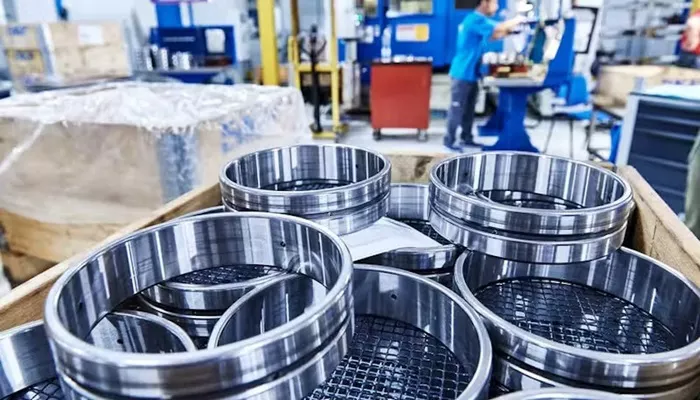The U.S. manufacturing sector is making a strong comeback. After years of falling behind in machine tool innovation, the rising demand for domestic production is now driving the industry to catch up. With a $2.1 trillion boost from federal initiatives like the Infrastructure Investment and Jobs Act (IIJA), Inflation Reduction Act (IRA), and CHIPS and Science Act, the push to strengthen domestic manufacturing is gaining momentum.
This so-called “manufacturing renaissance” is largely fueled by the need to build local supply chains for critical industries. For instance, semiconductor lead times, which were previously around 3-4 months, soared to over a year between 2021 and 2022. With industries such as artificial intelligence, energy, semiconductors, metal manufacturing, and paper pulp expected to grow in the coming years, improving domestic production capacity and supply chains is more vital than ever. This shift calls for a major upgrade in infrastructure and machinery.
The Need for Advanced Machinery
As demand increases, manufacturers must keep up. To meet the growing need, machinery must operate faster, with greater precision, and better energy efficiency. Over half of U.S. manufacturing infrastructure is over 30 years old, making machine tool productivity enhancements even more urgent.
Technological advancements like AI and the Internet of Things are already making computer numerical control (CNC) machines more adaptable and efficient. However, improvements in the machinery itself are also essential to meet the higher speed and quality standards set by the manufacturing resurgence. Key components, particularly bearings, need to evolve to support these changes.
The Evolution of Bearings
Bearings have been a cornerstone of industrial progress for centuries, enhancing quality and performance across many sectors. Recent innovations, such as super-precision bearings, have improved speed, reliability, and overall machine productivity.
As demand intensifies, manufacturers need more than precision. Machinery must operate at higher speeds while remaining efficient. To meet this need, component manufacturers are developing high-speed parts that improve both quality and efficiency while building on the accuracy of super-precision bearings.
Ultra-Fast Bearings: The Next Frontier
Ultra-fast, super-precision angular contact ball bearings are now pushing the boundaries of machine tool innovation. These bearings can handle extremely high rotational speeds while maintaining precision, thanks to advances like steel heat treatment, enhanced raceway surface hardness, and optimized internal geometry.
These bearings offer a 20% increase in rotational speed capabilities compared to non-ultra-fast counterparts. They can be customized for specific applications, enhancing productivity by improving machine efficiency, performance, and longevity.
Improving Efficiency and Sustainability
When paired with high-speed grinding spindles—which can rotate at speeds exceeding 20,000 revolutions per minute—ultra-fast bearings boost surface finish and cutting accuracy. This results in higher-quality finished products and less friction in the machine, improving energy efficiency and reducing heat. This reduction in friction may also eliminate the need for complex cooling systems, allowing for simpler lubrication methods.
In many cases, grease lubrication can replace oil or oil-air systems, reducing maintenance costs and eliminating the energy consumption of coolant circulation. Grease-lubricated bearings also reduce noise, making the work environment quieter and safer.
With these benefits, ultra-fast bearings are becoming a top choice for manufacturers aiming to increase productivity while meeting modern industry standards for sustainability and quality.
Adapting to High-Speed Machinery
As U.S. manufacturing grows, machinery must evolve to produce high-quality products more efficiently. Ultra-fast bearings and high-speed grinding spindles are compatible with many existing machines, making upgrades relatively straightforward. Investing in these upgrades will not only boost production but also improve machine performance by reducing friction and heat, which enhances longevity.
Manufacturers looking to adopt high-speed machine tools will need to work closely with innovative bearing suppliers. These suppliers can help integrate new technology, ensuring smooth installations and setting up machines to meet productivity goals.
The right supplier will also provide ongoing support, monitoring machine conditions and optimizing performance over time. As manufacturing continues to grow, upgrading machine tools will be essential to meet demand and produce high-quality products.

